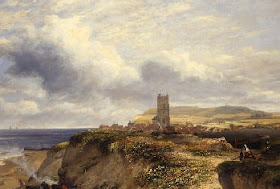Because it has a rail connection to Norwich Cromer is probably the coastal resort I've frequented most. It's been a while since I visited the 'Gem of the Norfolk Coast', which is situated some twenty-odd miles north of Norwich. A barmy summer of crab sandwiches, swimming and putting on the green, now long gone.
Cromer is also the place where over many years I've read innumerable books while on the beach. These days I have a small tent with me in readiness for the vastly differing weather conditions between hinterland and coast.
Cromer is also the place where over many years I've read innumerable books while on the beach. These days I have a small tent with me in readiness for the vastly differing weather conditions between hinterland and coast.
I'd almost forgotten how relaxing it is to turn the pages accompanied by the sound of surf and waves breaking. As ever there was an fairly stiff off-shore wind from an icy North sea, but the quality of light, bracing air and immensity of space, easily compensated. Geographically, the Norfolk coast is famous for being a place where facing due north there is no land between oneself and the frozen ice of the Arctic. A little too early in the year for a swim in the sea.
At low-tide one begins to sense the prehistory of the coast-line. In fact much of the beach was once part of a prehistoric forest bed which was formed between 780,000 to 450,000 years ago. Known as the geological era of the Cromerian Stage, during the last ice-age or Pleistocene, the Cromerian Interglacial is the benchmark that all European countries use when studying their own geological deposits.
The fossilized skeleton of a steppe mammoth (Mammuthus trogontherii) an elephant some 600,00 years old was discovered not far from Cromer, at West Runton in 1990.
Further along the coast is the site of Seahenge, an early man ceremonial ritual site marked by a circle of wood beams with an upturned tree-root at its centre dated circa 2100 BCE (scroll down to earlier May post for pics of Seahenge).
The fossilized skeleton of a steppe mammoth (Mammuthus trogontherii) an elephant some 600,00 years old was discovered not far from Cromer, at West Runton in 1990.
Further along the coast is the site of Seahenge, an early man ceremonial ritual site marked by a circle of wood beams with an upturned tree-root at its centre dated circa 2100 BCE (scroll down to earlier May post for pics of Seahenge).
It's very pleasant on a summer's evening to sit on Cromer Pier with a drink and watch the sun sink into the sea.
Cromer by James Stark (1794-1859) 'Norwich School'
Wiki-links
West Runton Elephant
Cromerian Stage
Seahenge
Norwich School














 .
.